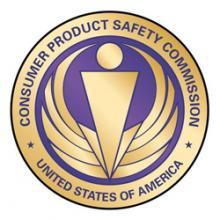
The U.S. Consumer Product Safety Commission (CPSC) is an agency that was created in 1972 and began operations in 1973. The main purpose of this agency is to protect the public from unnecessary harm or death from consumer products. They have thousands of consumer products that are under their jurisdiction. This Agency is headed by five commissioners that are nominated by the President of the U.S. and then confirmed by the Senate. The President appoints a Chairman of the Agency, and the terms are for seven staggered years. These commissioners set policy for the CPSC. The Executive Director oversees the Commission policy and administration and implements the reports from: Hazard Identification and Reduction, Planning, and Evaluation, Compliance and Field Operations, Information and Public Affairs, International Programs and Intergovernmental Affairs, and Human Resources. At the present time CPSC has approximately 500 employees who are charged with the responsibility of keeping the consumer safe by checking on the safety of over 15,000 different types of consumer products.
As an independent Federal Regulatory Agency, CPSC informs and educates consumers through state and local government, private organizations, and the media and by responding to individuals that report defective products. They continue to develop industry standards voluntarily and conduct research of products that may be hazardous. If there isn’t a feasible standard that adequately protects the public, they issue and enforce a mandatory standard against dangerous consumer products. CPSC also conducts research on potential product hazards.
CPSC has jurisdiction over consumer products that are used both in and out of the home, and in sports, recreation and schools. There are some categories, such as alcohol, tobacco, food, drugs, cosmetics, pesticides, automobiles and other vehicles on the road, medical devices, and firearms that they have no jurisdiction. The agency also cannot recommend any specific products or brands. Nor do they test or certify a product before it is sold to the general public. However, they do provide information to consumers on the safety features to look for in a particular product.
Recalls are one of the very effective means that the agency uses to keep the public safe. If a product is deemed unsafe, defective, or violates a mandatory standard, CPSC will send a press release about the recall of the particular product to the general public.
Publications about consumer safety are free and available on their website. Some of them include: All Terrain Vehicle Safety, Art and Crafts Safety, Bicycle Safety, Child Safety, Children’s Furniture, Clothing Safety, Crib Safety and SIDS Reduction, Electrical Safety, Fire Safety, Holiday Safety, Home Heating Equipment, Household Products Safety, Indoor Air Quality, MECAP News, Older Consumers Safety, Outdoor Power Equipment Safety, Playground Safety, Poison Prevention, Pool and Spa Safety, and Recreation and Sports Safety as well as Reports, General Information, and The Safety Review.
Also found on their website is information on Consumer Product Related Statistics. These statistics include Children’s Products, Child Poisonings, Carbon Monoxide Poisonings, Electrocutions, Fireworks, Hazard Screening, Sports and Recreation, Submersion and other statistics, such as Nail Gun Related Injuries and Deaths, Shopping Cart Injuries, and the Estimated Injuries and Reported Fatalities because of the Instability and Tipover of Appliances, Furniture and Televisions.1
- 1. U.S. Consumer Product Safety Commission. < www.cpsc.gov > 22 July 2010.

